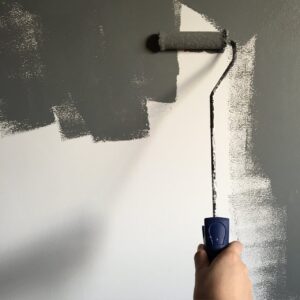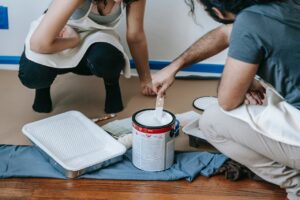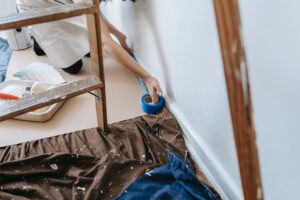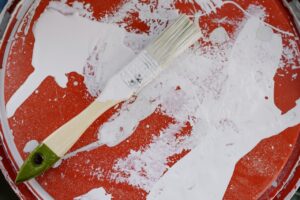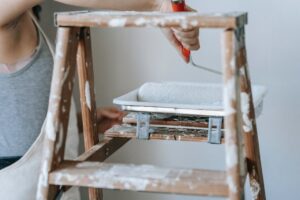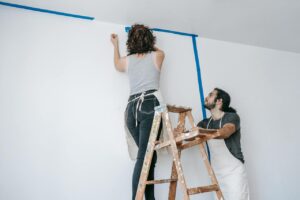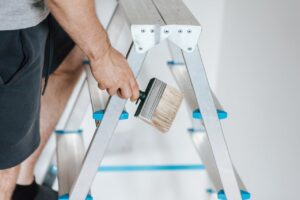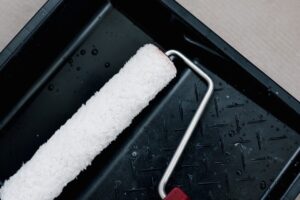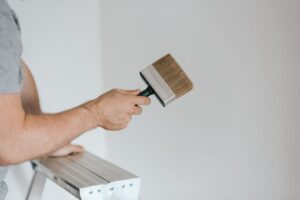
10 Essential Steps In Home Painting Preparation You Can’t Afford To Miss
Home painting can be a transformative and cost-effective way to breathe new life into your living space. However, the key to a successful and long-lasting paint job lies in the preparation. Skipping or neglecting crucial steps in the preparation process can lead to unsatisfactory results and may even affect the durability of the paint. In this comprehensive guide, we will explore the 10 essential steps in home painting preparation that you simply can’t afford to miss. 1. Assessing The Surface Embarking on a painting project requires thoughtful consideration, and the first step is to thoroughly evaluate the surfaces awaiting your creative touch. Take a moment before you even contemplate wielding a paintbrush to engage in a meticulous inspection of the areas slated for transformation. Each surface possesses its unique characteristics, necessitating tailored preparations for an optimal outcome. In this preliminary phase, pay close attention to any pre-existing imperfections that may mar the beauty of your finished masterpiece. Keep a keen eye out for cracks, holes, or telltale signs of peeling paint that might compromise the integrity of your artistic endeavor. By addressing these issues proactively, before the application of vibrant hues, you pave the way for a seamless and decidedly professional finish. Remember, the success of your painting venture lies not only in the strokes of your brush but also in the thoroughness of your preparatory efforts. Take the time to assess, repair, and refine, and your artistic vision will manifest itself on surfaces that radiate perfection. 2. Cleaning And Sanding Preparing your canvas—whether it’s a blank slate for an artist or the walls of your home awaiting a fresh coat of paint—involves a meticulous process of cleaning and sanding. Just as an artist wouldn’t want dust and imperfections to mar their masterpiece, your walls deserve the same level of attention. Start by erasing the traces of daily life, the dust that settles, the dirt that accumulates, and the grease that stubbornly clings. A mild detergent mixed with water is your trusty potion for this task, a magical elixir that wipes away the grime and prepares the surface for its transformation. But wait, there’s more to this choreographic prelude! For those glossy surfaces that demand a bit more finesse, gentle sanding is the graceful dance move that ensures a perfect harmony between the wall and the paint. This isn’t just about removing imperfections; it’s about creating a symphony of adhesion, a textured embrace that guarantees your paint will hold steadfast and true. 3. Repairing And Patching Embarking on the journey to transform your space into a visual masterpiece requires meticulous attention to detail, and addressing imperfections in the walls stands as a pivotal step toward achieving that flawless finish. As you delve into this transformative process, arm yourself with a high-quality filler, ready to expertly mend any unsightly holes, stubborn cracks, or subtle dents that may have marred the pristine canvas of your walls. Picture this: a dollop of precision applied to each blemish, filling it with care and consideration. But the artistry doesn’t stop there. To truly elevate your walls to a realm of perfection, the next stroke in this creative endeavor involves the gentle caress of sandpaper, smoothing the once-flawed patches into a seamless harmony with the surrounding surface. It’s not just a repair; it’s a symphony of craftsmanship, ensuring that every repaired nook and cranny contributes to the overall masterpiece. This investment of time and effort in the repairing and patching phase is not merely a technicality; it’s a deliberate choice toward excellence. The patched areas, now transformed and integrated, will not only stand as a testament to your dedication but also play a pivotal role in the symphony of a professional-looking result. So, embrace the art of meticulous repair, for in these details, the beauty of your space truly comes to life. 4. Protecting Furniture And Floors When diving into the vibrant world of home painting, it’s crucial to be mindful of the potential mess that can ensue. The last thing anyone wants is to discover unexpected paint splatters adorning their beloved furniture or pristine floors. To safeguard your cherished belongings from unintentional artistic expressions, consider investing a bit of time in a proactive measure—cover and shield them with the reliable embrace of drop cloths or the protective barrier of plastic sheets. While it might initially appear as an additional step, akin to a detour on the road to your artistic masterpiece, the benefits far outweigh the seemingly modest inconvenience. Picture it as a shield against the chaos, a pre-emptive strike against the rogue droplets and accidental spills that may threaten the sanctity of your domestic space. This meticulous approach not only safeguards your furniture and floors but also grants you the peace of mind to fully immerse yourself in the creative process without the nagging worry of collateral damage. 5. Choosing The Right Primer Selecting the appropriate primer is a pivotal aspect of the painting process, a step too frequently underestimated despite its paramount importance in ensuring the durability and uniformity of your final paint job. The role of a well-chosen primer extends beyond the mere preparatory phase—it serves as the foundation for a seamless finish. Not only does it facilitate a silky-smooth surface, but it also significantly boosts the adhesion of the paint, contributing to a more resilient and long-lasting outcome. Moreover, a judiciously chosen primer can act as a formidable barrier, preventing unsightly stains from making an unwelcome appearance by bleeding through the layers of paint. It’s essential to recognize that different surfaces demand different primers tailored to their unique characteristics. A primer that harmonizes with one surface may not necessarily exhibit the same efficacy on another. Hence, a thoughtful consideration of compatibility between the chosen primer and paint is imperative. This conscientious selection ensures a symbiotic relationship between the two, optimizing their collective performance and ultimately culminating in a paint job that not only stands the test of time but radiates a flawless, professional allure. https://youtu.be/X9q3FKNEyCw?si=RV9c_5VL1-e_0IdS 6. Selecting The Perfect Paint

